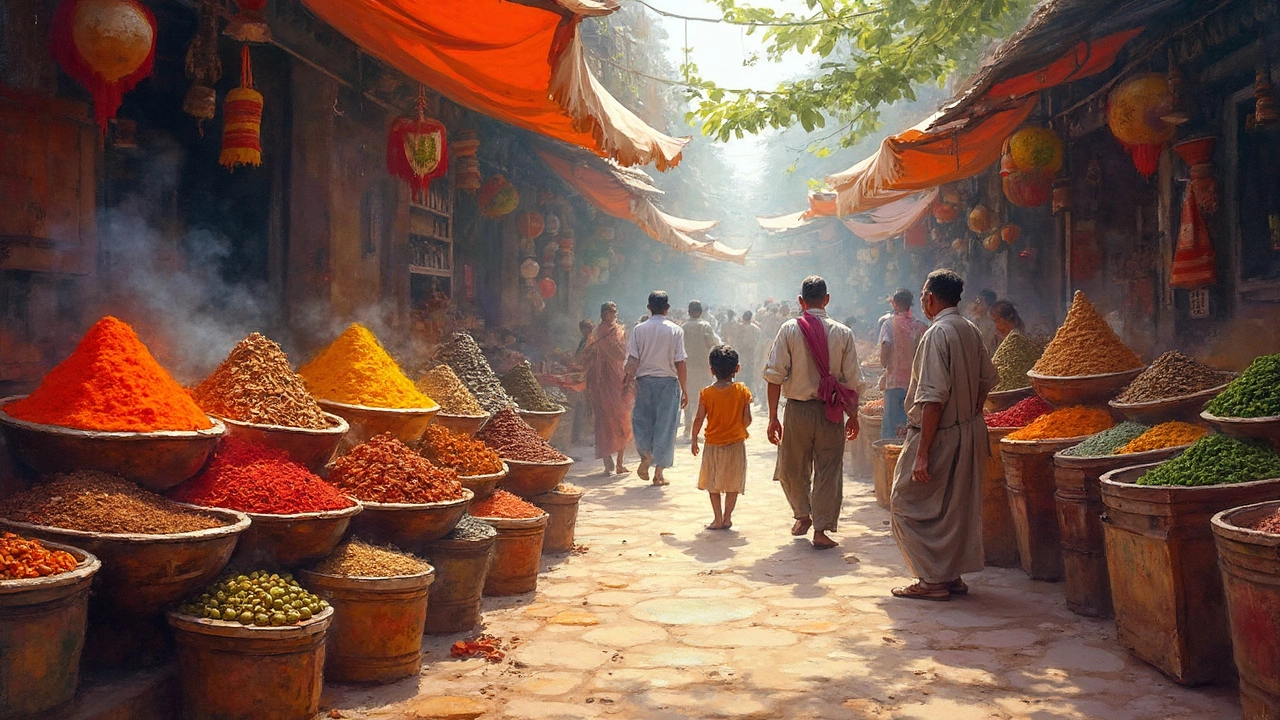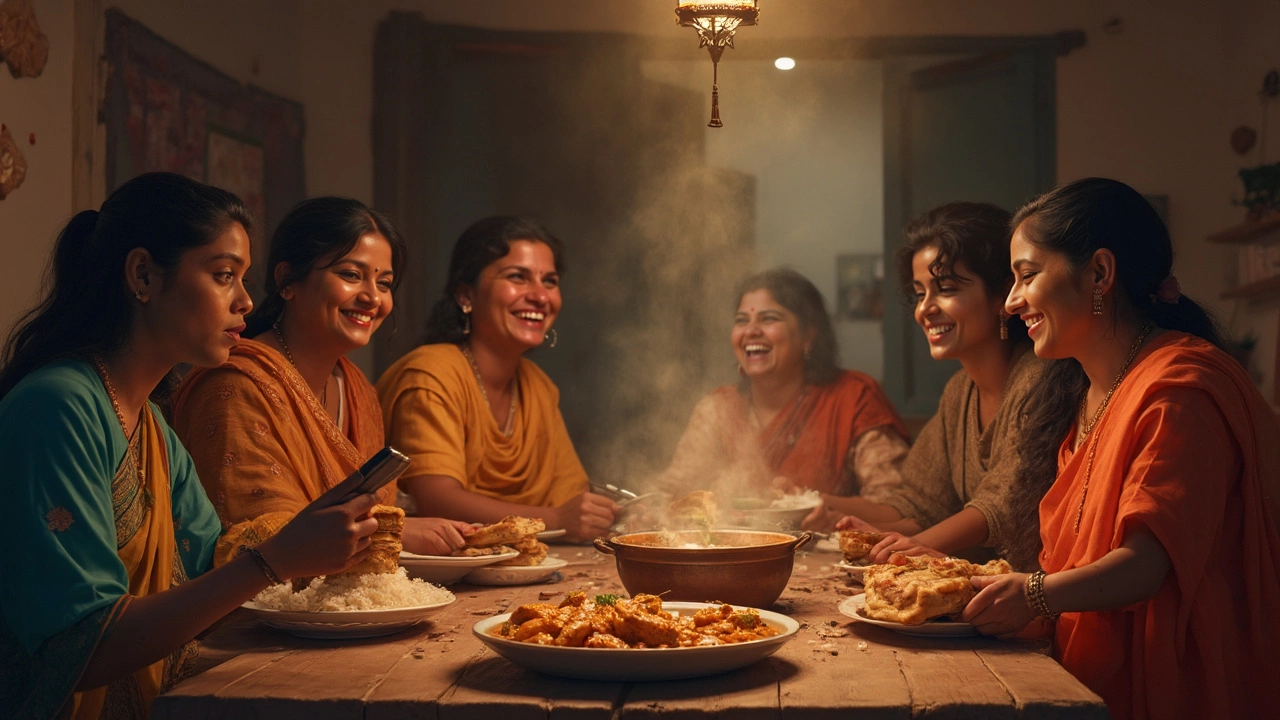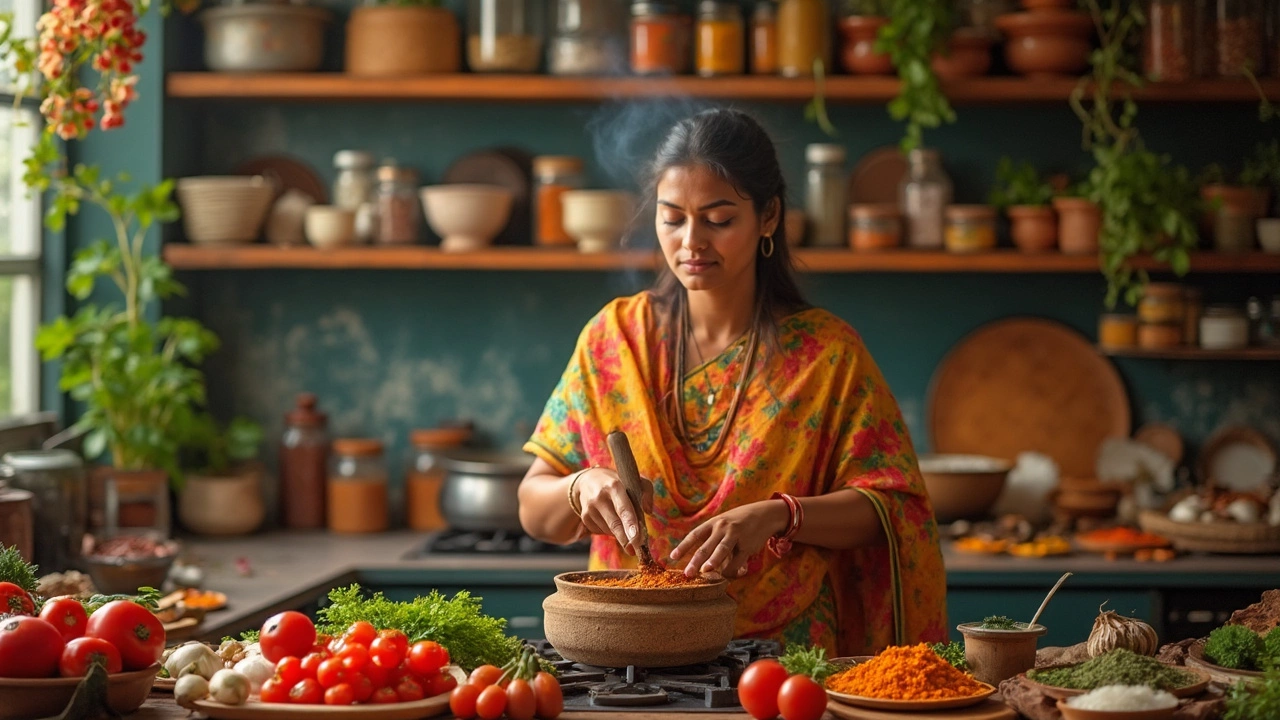Chicken curry isn't just about throwing chicken in a pot with some random spices. There's a whole world of flavors coming together in harmony. At the heart of any chicken curry recipe is the ever-essential spice blend. Now, not every curry is created equal, and trust me, no two curries will taste the same—unless you're following a recipe to the dot every single time.
So, let's get down to what makes a traditional curry, well, traditional. We've got spices like turmeric, cumin, and coriander—these little gems give curry its classic color and rich aroma. And don't get me started on the magic of freshly chopped onions, garlic, and ginger. These are the unsung heroes that build the base of a curry sauce.
Oh, and here's a tip: the trick is to let your spices bloom. That means cooking them just enough to release their oils—nothing worse than raw spice taste in your curry, right? Patience is key here.
- Key Spices and Their Roles
- Essential Ingredients
- Variations Across Regions
- Common Cooking Techniques
- Tips for Perfecting Your Curry
Key Spices and Their Roles
When it comes to whipping up a delicious curry, knowing your spices is half the battle. Let's dive into the stars of the spice world that make a chicken curry stand out.
Turmeric: The Golden Spice
First up, we have turmeric. This one's responsible for that gorgeous yellow hue you see in many curries. Besides adding color, it brings in an earthy flavor that's mild but essential. Fun fact: turmeric is also a bit of a health booster thanks to its anti-inflammatory properties. Pretty neat for something that's also tasty, right?
Cumin and Coriander: The Dynamic Duo
Next on the list is the winning team of cumin and coriander. Cumin brings a warm, nutty vibe to the dish, which makes it super comforting. Coriander, on the other hand, adds a touch of citrus and sweetness, balancing out the heat from the other spices. Together, they're the dynamic duo giving your curry a deep, rich backbone.
Chili: Adding That Kick
Let's talk about the heat factor. Red chili powder or fresh chilies are what give your curry recipe that fiery kick. The amount can be adjusted based on how spicy you like it. Remember, there's no right or wrong here—just make sure your taste buds are prepared!
Garam Masala: The Finishing Touch
Finally, we can't forget garam masala. This is usually added towards the end of the cooking process. It's a blend of warming spices like cinnamon, cloves, and cardamom. Garam masala brings everything together, rounding off the flavors and tying them up with a neat little bow.
Spices are the heart and soul of traditional chicken curry. Mastering them gets you one step closer to culinary greatness. So, next time you cook up a storm, take a moment to appreciate the role these spices play. After all, they're the secret sauce to perfecting your curry!
Essential Ingredients
When we're talking about what traditionally goes into a chicken curry, certain ingredients are staples across kitchens. Each ingredient has its role, contributing to the overall taste and texture that makes curry, well, curry!
Proteins: The Chicken
Let's kick off with the star of the dish—chicken. Boneless or bone-in, each has its benefits. Bone-in chicken is often preferred for that deeper flavor it brings while simmering in the curry. But hey, for convenience, boneless works just fine too.
Aromatic Trinity: Onion, Ginger, and Garlic
This trio is a must. Onions, ginger, and garlic are usually sautéed at the beginning to form the curry's base. They give that lovely depth of flavor and are practically the soul of any good curry.
The Spice Blend
You knew this was coming! A typical curry spice mix includes turmeric, cumin, coriander, and a dash of chili powder for heat. Fresh whole spices like cardamom, cloves, and cinnamon can take your curry game to the next level by adding warmth and subtle sweetness.
Tomatoes and Yogurt
These provide the tang and help create a creamy, thick sauce. Some people use canned tomatoes, but fresh ones can add more depth. Yogurt acts as a tenderizer for the chicken, making it juicy and flavorful.
Thickening Agents
- Cream or coconut milk is often used to make the curry richer and smoother.
- Ground nuts or seeds like cashews or almonds can also be blended into the sauce for extra creaminess.
Now, with these essential curry ingredients locked in, you're well on your way to crafting a classic dish worth sharing with friends and family.

Variations Across Regions
Alright, buckle up because chicken curry isn't a one-size-fits-all deal. It might originate from India, but its regional variations are wild and wonderful, spreading across the globe and adapting to local tastes and ingredients.
Indian Variations
India is the granddaddy of curry. In North India, think Punjab, the chicken curry is usually rich and creamy, with lots of butter and cream. They love their garam masala blend too.
Head over to South India, and you're looking at more coconut milk in the mix, giving it a nice, subtle sweetness. Here, curry leaves and mustard seeds are key players, which aren't as common elsewhere.
Thai Curries
Now, if you move eastward, Thailand has its claim to curry fame. The red and green curries are less about the spice blends and more about those pukka Thai ingredients like lemongrass, galangal, and kaffir lime leaves. Totally different vibe but oh-so-delicious.
British Twist
Did you know the UK has a long affair with curry? Birmingham (where I call home) serves up amazing Balti curries—inclusive of big saucy dishes cooked in specific Balti pans. Fun fact: Chicken Tikka Masala was actually invented here!
Data Table Highlighting Popular Curry Types
| Curry Type | Region | Distinct Ingredients |
|---|---|---|
| Butter Chicken | North India | Butter, Cream, Garam Masala |
| Thai Red Curry | Thailand | Lemongrass, Kaffir Lime Leaves |
| Balti Curry | United Kingdom | Sizzling Spices, Unique Balti Pan |
So, there you have it—a whirlwind tour of chicken curry across continents. Each region adds its flair using local ingredients and techniques, resulting in a dish that's both distinct and undeniably tasty. Whether you lean towards fiery Indian spices or the freshness of Thai herbs, there's a curry out there just waiting for you.
Common Cooking Techniques
Making a chicken curry might seem daunting at first, but it's actually a medley of basic cooking techniques. These steps help draw out flavors and build that mouthwatering depth of taste.
Sautéing the Basics
The journey begins with sautéing onions, garlic, and ginger. Ever noticed how that sizzling sound and intoxicating aroma fill up your entire house? That's the trio working their magic to form the flavorful base of the curry.
Blooming Spices
This is a crucial step—you’re going to want to bloom your spices in hot oil. This means frying your spice mix just enough to release all those amazing flavors and colors. Toss in your turmeric, cumin, and coriander, and let them mingle and sizzle for a bit. You'll be rewarded with an aroma that's sure to get those taste buds tingling.
The Art of Simmering
Once your onions, garlic, and ginger are nicely sautéed, and your spices are bloomed, it's time for some patience. Combine them with tomatoes (or coconut milk for a creamier curry) and let the magic happen. Simmering allows all the ingredients to play together for a good 20-30 minutes.
Cooking the Chicken
Cooking the chicken properly ensures it absorbs all those lovely flavors. Start by browning the chicken pieces to seal in juices, then let them gently braise in the curry sauce. This way, the chicken stays juicy and tender.
Adjusting Consistency
While simmering, you can adjust the sauce's thickness. If it’s too thick, add water or broth. Too thin? Cook it a bit longer without a lid so some of the liquid evaporates. Perfect consistency is key to a great curry.
Final Touches
- Check for seasoning just before serving; add more salt, spice, or acidity if needed.
- Some fresh coriander leaves and a squeeze of lime juice at the end can elevate your dish.
- Serve your curry with some warm, fluffy basmati rice or naan bread!

Tips for Perfecting Your Curry
Nailing the perfect chicken curry is more of an art than science. Anyone can follow a recipe, but here are some tips straight from the spice aisle of life to turn good into fantastic.
Let Your Ingredients Shine
The first rule of a great curry is to let all those flavors dance together. One thing you don't want is for any single strong flavor to steal the show. Start with fresh spices—turmeric, cumin, and coriander are your best friends. Give them a quick toast in the pan to awaken their full potential.
"A curry is not just a dish; it's a symphony of flavors," says Chef Anita Patel, a renowned expert in Indian cuisine.
Browning Matters
Don't rush the sautéing of onions, garlic, and ginger. You'd be surprised how caramelizing these can make a difference to your curry recipe. It lays down a solid foundation of flavor that builds up as you progress.
Timing Is Everything
Add your chicken once the sauce has started to come together. Over-cooked chicken can ruin the texture of otherwise good chicken curry. Simmer gently so everything melds together slowly, soaking up the spices and sauce.
Customize Your Curry
Your ideal curry consistency lies somewhere between thick and runny. Play around with the amount of water or broth and adjust as needed. And here's a pro tip: throw in a bit of a secret ingredient like a dash of coconut milk or cream for richness.
Accompanying Sides
Serving your curry with fragrant basmati rice or warm naan can elevate the whole experience. The interplay between the hearty curry and fluffy sides creates a perfect balance.
Remember, practice makes perfect, but following these basics can instantly up your curry game. Whether you're cooking for guests or just yourself, the art of curry-making is always worth the effort.
